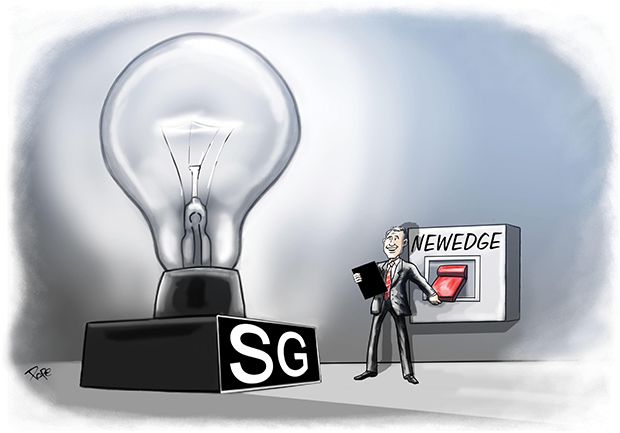Bullish commodity expectations were dashed as first-quarter exuberance faded fast. A stable model combining derivatives and financing with physical capabilities led to market share gains for one bank, as the integration of a broking business proved to be a game-changer. Societe Generale is IFR’s Commodity Derivatives House of the Year.
A surge in activity in the US gas market saw first-quarter profits surge at the US gas powerhouses, but the party quickly faded as commodity volumes slumped. For Societe Generale, a relative minnow in US gas and power, profits jumped six-fold in that business, but coming from a low base the bank didn’t rest on its laurels.
The integration of Newedge, the broking arm in which the bank took full ownership in 2013, reshaped SG’s commodities business to account for impending regulatory headwinds, enabling it to chip away at the competition in an environment of squeezed market volumes.
“Global regulations are moving the commodities world from over-the-counter to listed. It’s the direction that everyone is travelling in,” said Jonathan Whitehead, global head of commodity markets at SG. “We’re not going there overnight, but having the ability to do listed is increasingly important to clients.”
On top of the bank’s structuring, research, hedging and balance sheet capabilities, the broker business added agency execution and listed derivatives across 85 venues, as well as clearing services and prime broking.
That enabled SG to leapfrog rivals in commodity repo transactions, which rapidly extended across energy and metals through 2014. But while others mulled expansion to agriculture assets, SG offered an established service through Newedge.
“Agricultural inventory financing fits well with our activity on the metals side as it’s a similar structure,” said Whitehead.
The firm quadrupled that business in just six months as Newedge clients reaped the benefit of SG’s short-term funding rates, as well as a Single A rated counterparty.
Increased focus on the Americas meanwhile delivered innovative hedge restructuring programmes for two Canadian oil and gas companies, reviving a business that came close to closure when funding levels worked against French banks.
“Technology developments mean that we’re more comfortable executing large transactions. It’s starting to make a huge difference, as we were able to be aggressive on the hedge,” said Whitehead.
In Latin America, SG employed a back-to-back purchase and sale transaction that allowed a petrochemical client to extend credit terms on oil from a third-party supplier to 360 days, from a market standard of just 30 days.
In Europe, rising gas storage volumes led to a bespoke €100m solution for a utility seeking to streamline its balance sheet through a pre-filled virtual storage agreement that saw SG retain rights to sell the commodity in the market a year later.
“It’s a solution that works well with a utility that is aggressively managing its working capital, and we’re seeing a lot more utilities do that,” said Whitehead. “It’s very balance-sheet efficient as it is deemed to be an instrument that can be liquidated relatively easily.”
SG successfully avoided 2014’s biggest pitfall, a scandal in the Chinese port of Qingdao as warehoused copper assets were pledged multiple times.
“We don’t have any exposure to those issues and our internal policies and procedures would not have allowed us to do that business,” said Whitehead.
With a clean bill of health, and as others fled the region, the bank completed a US$40m copper prepaid facility for delivery of LME warrants.
Research remained at the core of SG’s investor business and underpinned the launch of the Seasonal Factor Commodity Index, which allocates across the asset class in response to 72 seasonal supply and demand characteristics.
By the end of September, the index outperformed its GSCI benchmark by 11% and the bank set to work on a UCITs-compliant version.
“There has been a structural change in the investor business and it is following the equity path of 10 years ago, with clients awarding flow as a function of the value that banks add,” said Alexandre Cosquer, global head of commodity investment solutions.
A Commodity Risk Premia model was launched in July, enabling investors to compare observed commodity prices with the modelled price.
“It’s an important tool to monitor shocks in the market and can be used to help clients with dispersion strategies,” said Cosquer.
In structured notes, the Alpha SP pricing tool was introduced to commodities in October, allowing clients to customise payoffs across a wide range of underlyings. It delivered 200 pricings each day, with five trades executed in the first week.
To see the digital version of the IFR Review of the Year, please click here.
To purchase printed copies or a PDF of this report, please email gloria.balbastro@thomsonreuters.com.




